Today’s addition to the Somebodies series is arguably the most widely well-known figure we’re featuring since the start of this series. You may know her from the SLOCA history books, as the wife of two kings and mother of two kings, the “Grandmother of Europe,” or as Katharine Hepburn in the 1968 film, The Lion in Winter—that’s right, today’s feature is the one and only ELEANOR OF AQUITAINE.
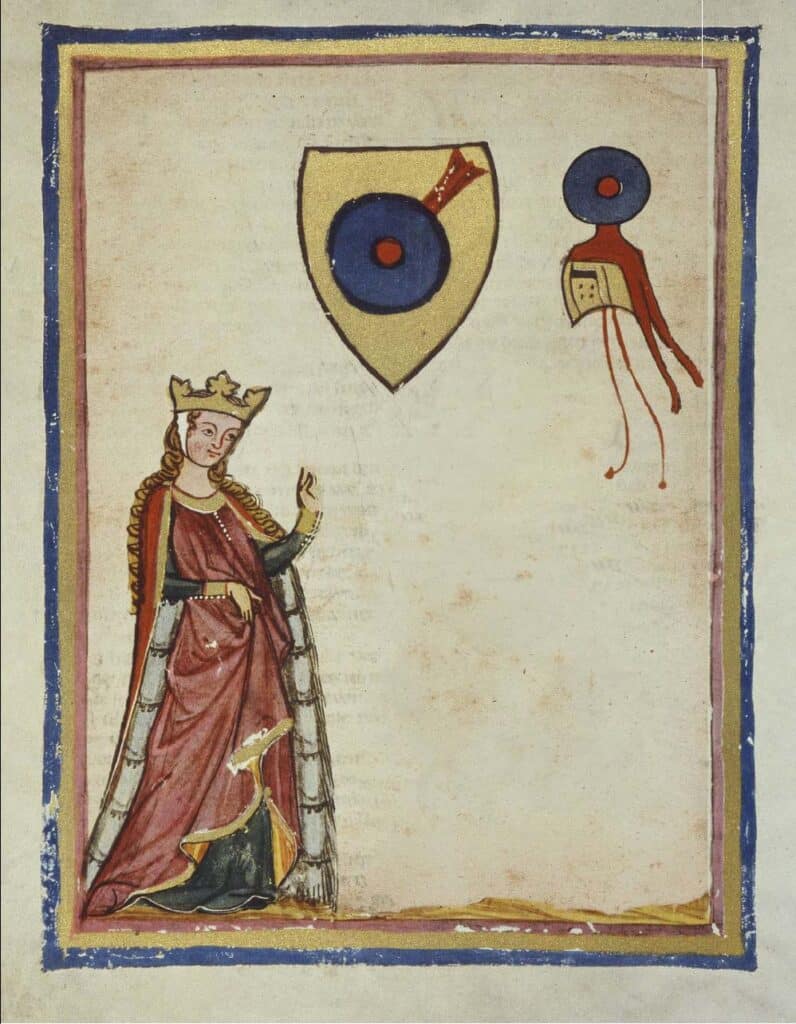
We’ve already mentioned Eleanor in our Somebodies post about Marie de France. As a recap, Marie may have written her groundbreaking poetry to her possible relative, King Henry II, who was Eleanor’s second husband. Eleanor’s life also touches on the life of another amazing Medieval woman we’ve mentioned on the blog: Hildegard of Bingen, whose words grace our 22-23 SLOCA Rewards mug. Eleanor and Hildegard, two powerful women in different parts of Europe, corresponded via letter-writing during their lives.
A big influence for today’s Somebodies post is a couple of episodes from a great history podcast called Our Fake History, which delves into popular misconceptions about familiar figures and events across time. Their series on Eleanor of Aquitaine presents a theory first created by historian Michael R. Evans: that two different myths have followed this woman throughout history. On the one hand, Eleanor is perceived as a woman totally ahead of her time who brought only enlightenment and literature and goodness to her reign and rule in what he called the “golden myth.” On the other hand, the “black legend” presents Eleanor as a woman always rebelling against convention and indulging in a scandalous, hedonistic lifestyle. The true Eleanor seems to be not quite either of these and/or somewhere in between.
Either way, she lived a life that sounds like it could belong in a fairy tale: Between marriages and rumored affairs, coronations and battles, kidnappings and imprisonment, Eleanor lived a very full Medieval life. We’re giving you more of the story of her life (complete with subtitles + the most important information in bold!) because we just couldn’t help ourselves—it’s too exciting! So buckle up!
Eleanor’s Father + the Beginning of her First Marriage
Eleanor was daughter of William X, Duke of Aquitaine. Notably, when William died in a crusade, he left the prosperous duchy of Aquitaine (in what is now South France) to his daughter and her descendants. Upon his death, Eleanor became the most eligible heiress of Europe, though her father had requested that King Louis VI of France would find her a husband. In order to bring Aquitaine under his own rule, King Louis decided to marry Eleanor to his 17-year-old son, Louis VII, (Eleanor was 12 to 15 years old at the time). Three weeks after her father’s death, they were married, and, although Eleanor technically kept control of her land for the time being since it was agreed that the duchy would only pass to the crown when Eleanor’s son became king of France.
A few weeks after their marriage, her husband’s father died, making Eleanor Queen of France as well as Duchess of Aquitaine.
Fun fact: For a wedding present, she gave Louis VII a crystal vase set with jewels. It is from this vase, the only surviving object known to have belonged to Eleanor, that our illustration for today’s free printable wallpaper is pulled. The delicate filigree is typical of this time and place in the European decorative arts
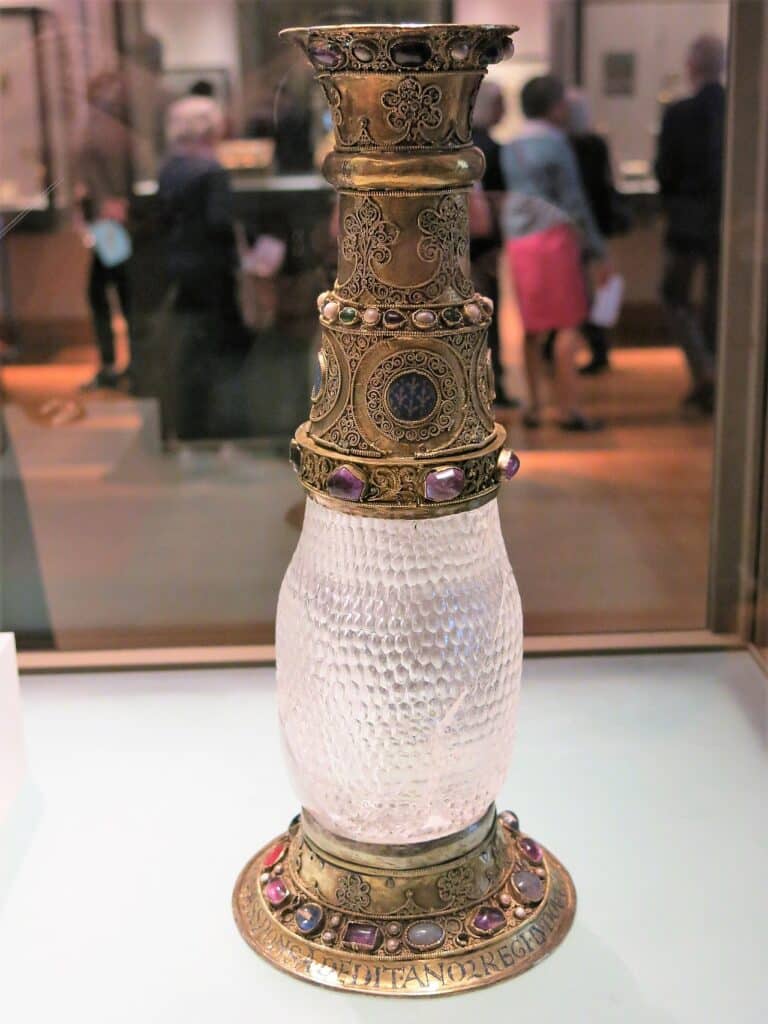
The End of Eleanor’s First Marriage

Eleanor’s first marriage was a complicated one. Some accounts lead scholars to believe that Louis VII was madly in love with Eleanor, other that he was disgusted by her spirited southern manner in the more staid context of the northern kingdom. Over the course of their marriage, Eleanor birthed two daughters, but no sons, which seemed to have put a strain on their marriage since the crown (and Aquitaine) must pass to a male heir. During their marriage, both Eleanor and Louis embarked on the Second Crusade. Louis was not an effective leader or warrior, which seemed to embarrass spirited Eleanor. Though their marriage seemed to be suffering before the crusade, this season only served to distance the couple more. There were also rumors of Eleanor having an affair with her uncle while on tour. Tellingly, when the crusade was over, Eleanor and Louis returned to France on separate ships.
While on these ships, they were separated even more by attacks on their fleet. When neither Eleanor nor Louis’ ship was heard of for two months, they were both given up for dead. Eventually, they reunited, but traveled to see the Pope to seek an annulment of their marriage. However the Pope only confirmed the legality of their marriage and asked them to sleep in the same bed. They conceived a second time, but the birth of another daughter seemed to be the nail in the coffin of their marriage. Interestingly, they were granted an annulment on the ground of consanguinity (meaning that they were deemed to be too closely related to each other). Eleanor left her two daughters in the care of the French royal family and went away.
Eleanor’s Second Marriage
Eleanor’s life is already pretty spicy, but it’s about to get more so (and this is only the beginning). On her way, she was almost kidnapped so that she could be married again and the men could gain control of her land. Once she regained safety, however, she wrote to Henry, Duke of Normandy and future king of England and basically proposed to him! Eight weeks after her annulment, they were quickly married (even though 1) Eleanor was more closely related to Henry than her first husband and 2) it was rumored that Eleanor had had an affair with Henry’s own father, Geoffrey).
Two years later, Eleanor became queen again, this time of England. This time, she bore Henry five sons (including future King Richard the Lionheart and King John) and three more daughters. But whereas her first marriage was marked by personality differences and distance, her second was marked by passionate arguments. Henry was repeatedly unfaithful to her, and although she did raise each of his illegitimate children alongside her own, a long-term affair with noblewoman Rosamund Clifford seems to have led to long-term strain between Henry and Eleanor. They separated in year thirteen of their marriage and Eleanor moved back to Poitiers, where she was born.
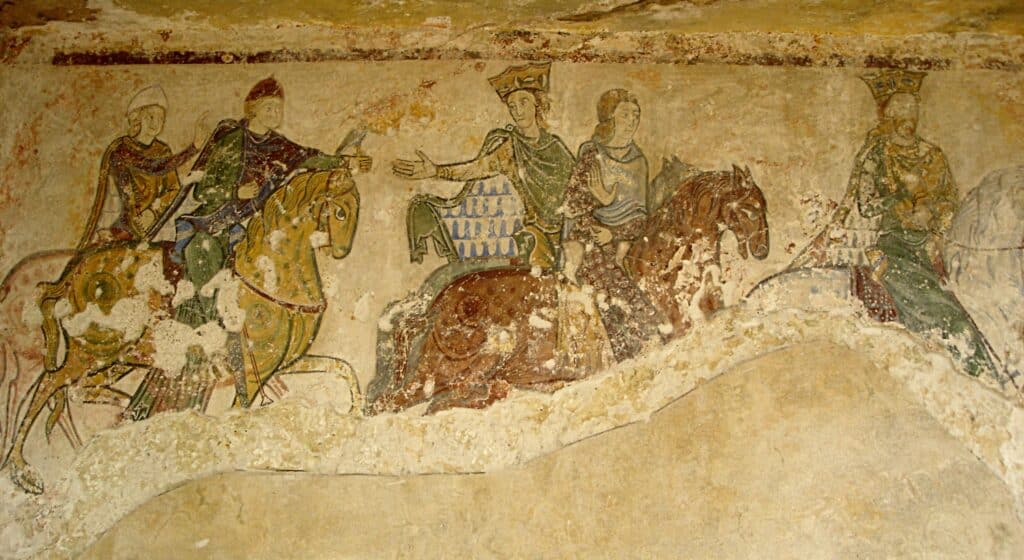
Estrangement + Imprisonment
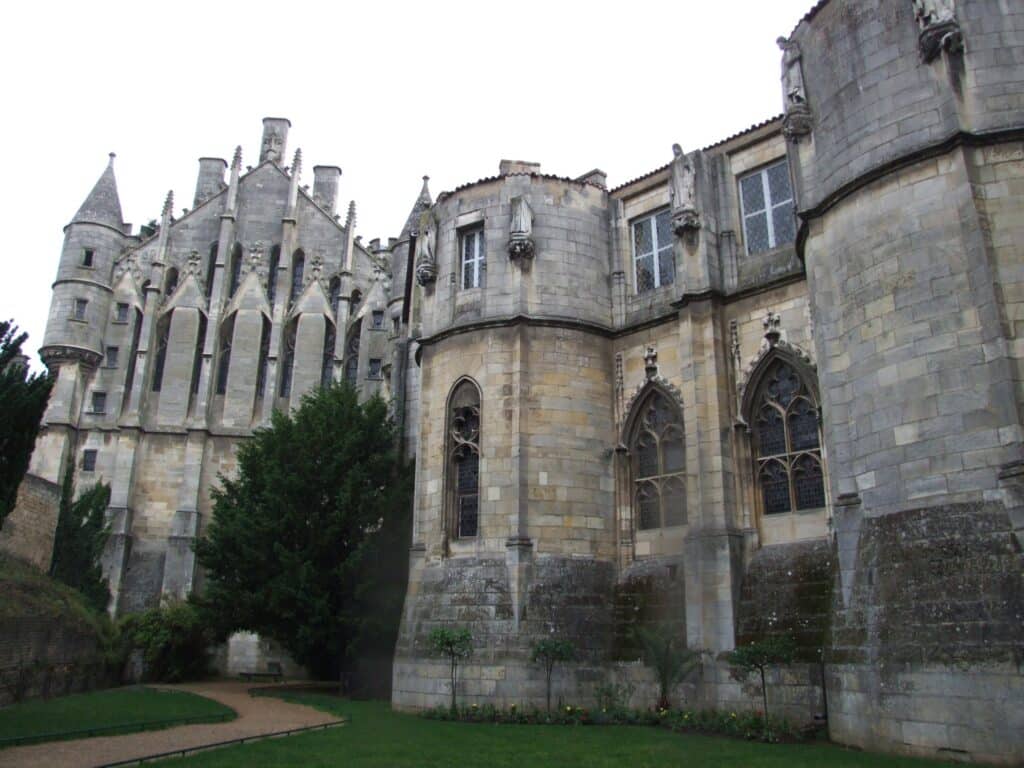
At Poitiers, Eleanor may or may not have established what is now called the “Court of Love” where Eleanor and one of her daughters encouraged and patronized troubadors, chivalry, and manners. How influential this was during her own time is debated, but it became a large part of the “golden myth” mentioned before that casts Eleanor as a beloved patron of the arts.
When Eleanor and Henry’s son, a younger Henry, revolted against his father, Eleanor plotted against her husband with her son. She was, however, captured by her husband and imprisoned for much of the next 16 years, only let out for special occasions like Christmas.
During this imprisonment, Henry’s longtime love, Rosamund mysteriously died. It was rumored that Eleanor may have had a hand in her death.
Later years
She was only granted true freedom when Henry died and her son, Richard, became king. Throughout the next years, Eleanor ruled England in Richard’s name while Richard was out crusading and while he himself was imprisoned during the war. Eleanor helped raise the ransom money to set him free. She also helped soothe relations between Richard and John, who had conspired against his brother in his absence, when Richard returned. The conflict was resolved and Richard named John his heir apparent.
Richard soon died and John came into power. While on her way to secure a bride for John, Eleanor was captured by a Lord whose lands had been sold to Eleanor’s late husband. Eleanor diplomacied her way to freedom, but soon became caught up in another conflict between her son and her grandson. Her grandson attacked her castle, but she was saved by John. After this (and a very eventful life), Eleanor took the veil and died three years later. She was buried next to her husband, Henry, and her son, Richard.
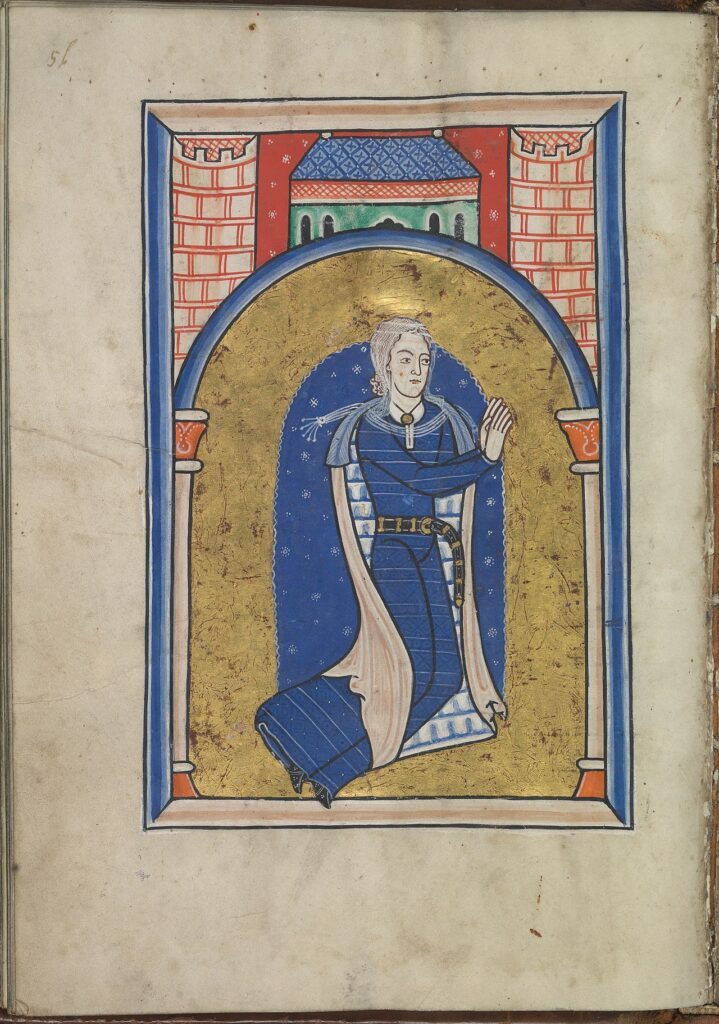
Whew! What a life! With such exciting and dramatic happenings, it’s no wonder that Eleanor’s life is shrouded in rumor and myth. Here are the conclusions we think we can draw from what we know and what we don’t know about her life and her influence.
1. Eleanor, like all humans, was neither simply good or simply bad. She was complicated, just like all of us.
2. Eleanor also had complicated marriages and a very complex family life. As Katharine Hepburn’s Eleanor says in The Lion in Winter…

Though most of us won’t have to contend with territorial wars or castle imprisonment or accession conflicts, I’m sure we can all relate to times when family life felt difficult. Even so, we can also use the family dynamics of Eleanor’s life as an example of what NOT to strive for. We can aim for more patience and communication and fewer power struggles (and definitely fewer imprisonments and revolts).
3. Speaking of power struggles… despite the struggle, Eleanor was powerful! In a time when the majority of women weren’t! She probably patronized the arts (even if not to the extent that some have made out), she married two kings, she gave birth to two more, she participated in the crusades (for better or worse), she made her own decisions (proposals of marriages, helping with revolts, diplomacy, etc), and she has inspired numerous books, movies, tv shows, and art pieces basically since she died.
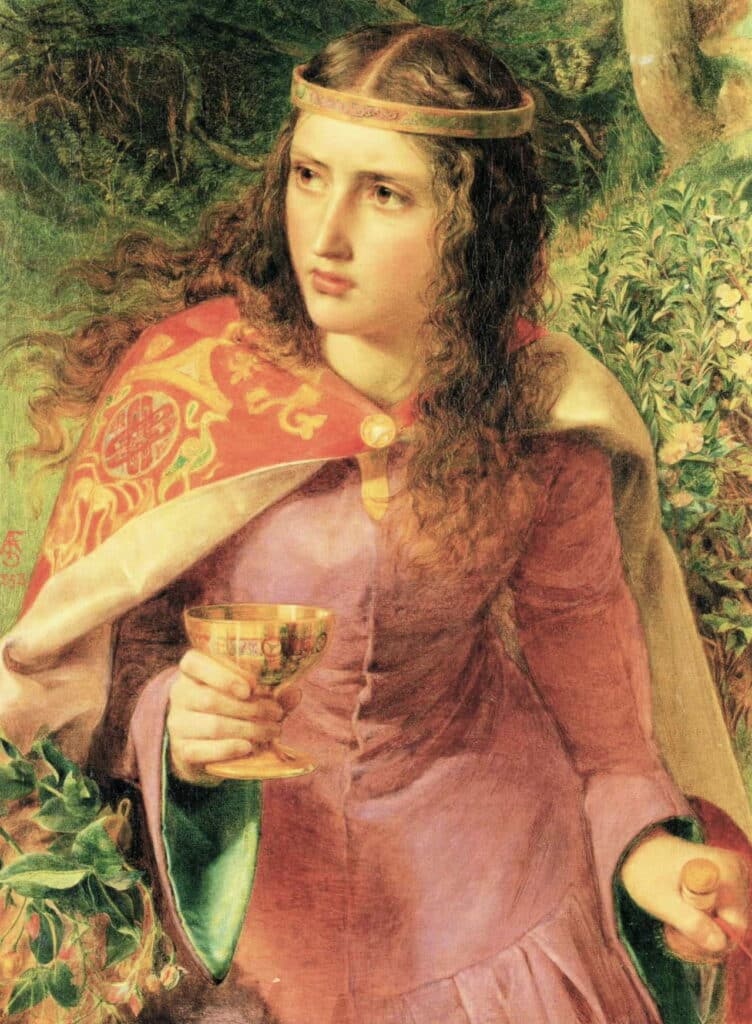
4. Though she may not be a great moral example to follow overall, there were times when she exhibited great thoughtfulness and wisdom. Our quote for today is one instance. Though perhaps she should have followed her own advice a bit more, the words hold true….
Trees are known not by their leaves or their flowers, but by their fruits.
This quotation is pulled from a letter from Eleanor to Pope Celestine III, when she was pleading with him to exert his power to help free her son, Richard, from his imprisonment. A few lines later, she says “I loved you not with tongue and word but in deed and truth.” Basically: actions speak louder than words! Have integrity and do what you say you’ll do. As leaves and flowers precede fruit, let your words precede your deeds. This is great advice for us all. Let us go forward with integrity this week, being truthful and wielding our own power (however little it may be in contrast to Eleanor’s) to do good actions wherever we go.
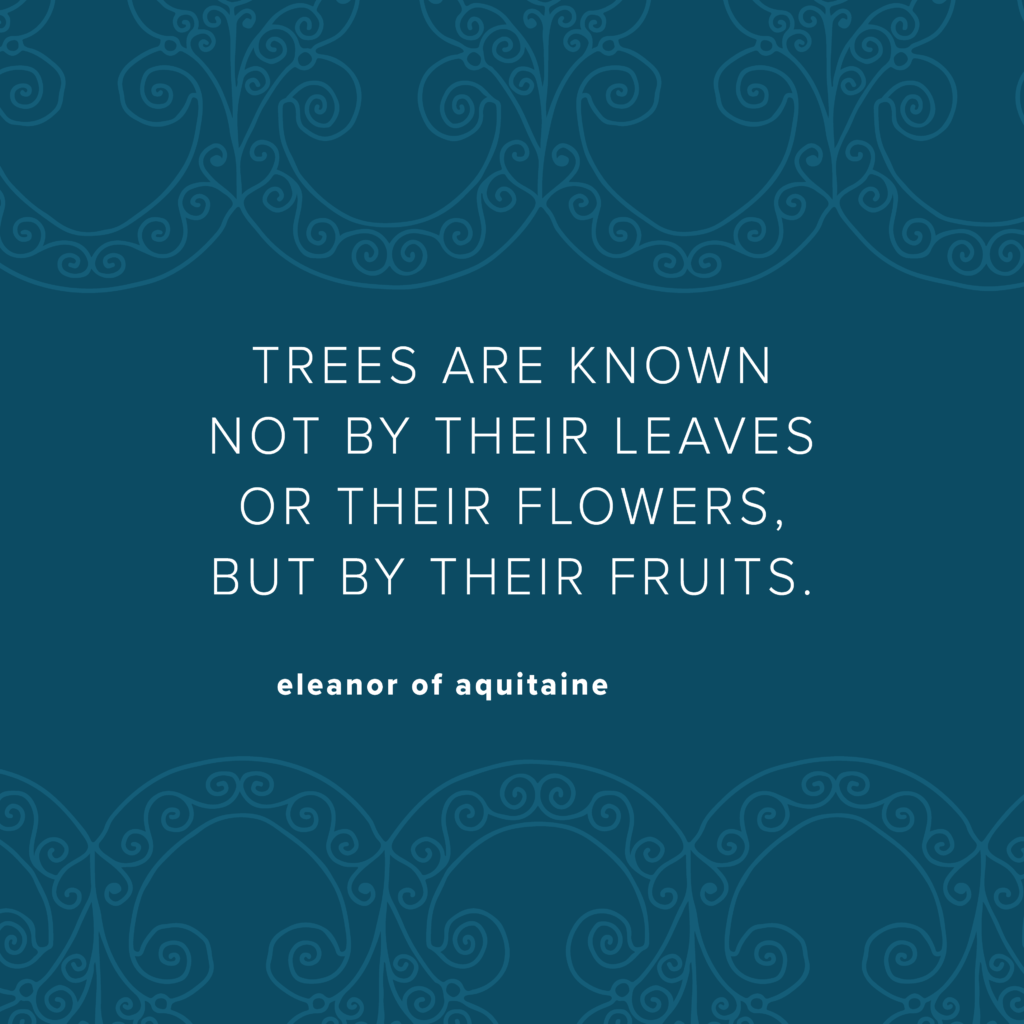
Don’t forget to check out our Instagram stories for our free smartphone wallpaper, or download below!
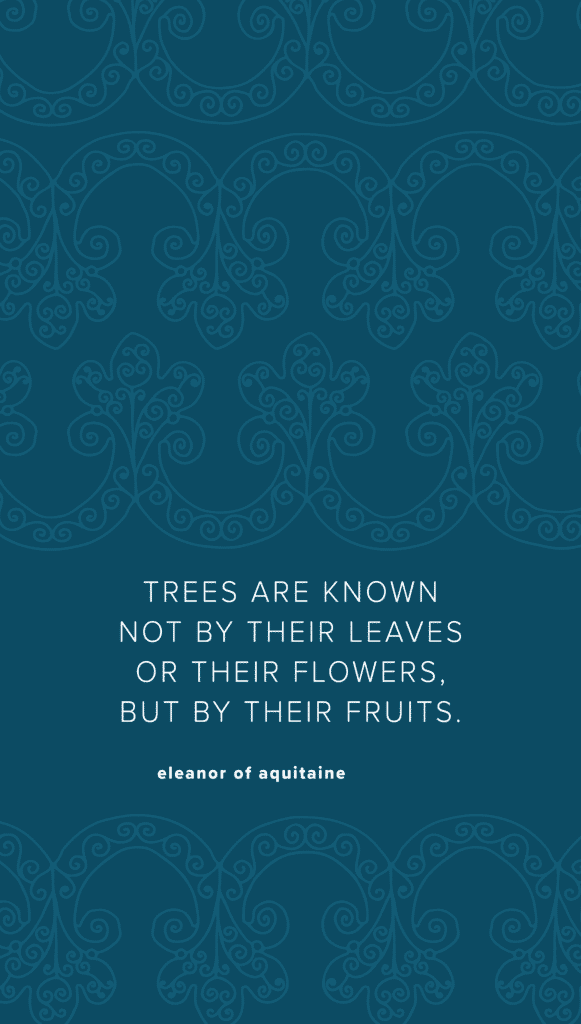





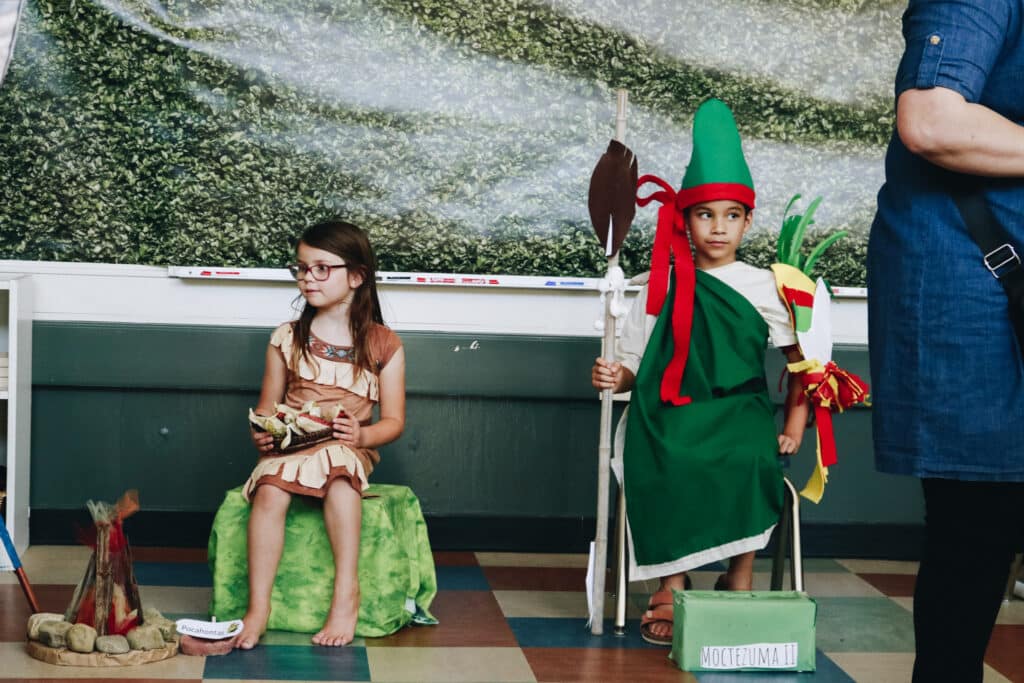







1 thought on “SLOCA Somebodies: Eleanor of Aquitaine”
So fascinating! What a lovely summary of this interesting woman.